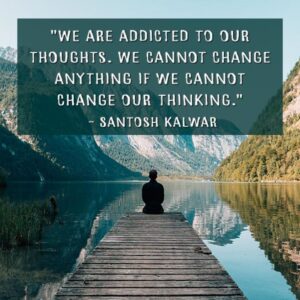- Wellness doesn’t have to be complicated; small, daily additions can lead to big improvements in one’s mood.
- Sustainable habits like simple food swaps or short movement breaks are easier to maintain and more effective long-term.
- Adding natural support to your daily routine can help with energy, rest, and recovery when chosen mindfully.
- Turning daily routines into enjoyable rituals makes healthy habits more straightforward to stick with and more emotionally rewarding.

Let’s face it — the world of wellness can feel overwhelming. Between endless smoothie recipes, morning routines that take all morning, and supplements with names you can’t pronounce, it’s easy to think that feeling better requires a total lifestyle overhaul.
But here’s a little secret: it doesn’t.
Real, lasting wellness doesn’t have to be complicated. Often, the most significant changes come from the most minor shifts. A pinch of something in your smoothie, an extra glass of water, or ten mindful minutes in your day — that’s where the magic happens. You don’t need to flip your life upside down. You just need to start stacking a few feel-good habits that fit into your real life.
In this post, you’ll discover simple, science-backed ways to boost your wellness. Think of it as adding just one new ingredient to your recipe for feeling good. Ready? Let’s get into it.
Why Small Wellness Shifts Matter
You don’t need a dramatic transformation to feel more energized, less stressed, and better in your body. Those “tiny tweaks” are usually the most powerful. Why? Because they’re doable. And when something’s feasible, you’ll stick with it.
A growing body of research around habit formation shows that small, consistent actions lead to long-term results. It’s called habit stacking — pairing a new behavior with something you already do, like stretching for five minutes right after brushing your teeth, or sipping a calming tea while checking your emails in the morning.
The beauty of these small additions is that they don’t demand much time or energy, but gently nudge your body and brain into a better rhythm. Over time, that five-minute stretch becomes a signal to relax. That herbal tea becomes a natural pause in a busy morning. And suddenly, you’re not just doing wellness — you’re living it.
These micro-routines build momentum. They’re easy to implement, hard to break, and sneakily effective. It’s like compound interest for your health: a little goes a long way, especially when it becomes part of your daily flow.
A Natural Way to Support Energy and Relaxation
Let’s discuss one of the most common complaints in modern life: feeling tired but wired. You know the drill—dragging yourself through the day, then lying awake at night with your mind buzzing. That pattern isn’t just frustrating; it’s mentally and physically exhausting.
One gentle way people support their nervous systems and improve rest and recovery is through mindful supplementation. Natural options like herbal tinctures, adaptogens, and minerals have been gaining attention for good reason—they tend to work with the body, not against it.
Among these, magnesium powder has quietly become a go-to for those looking to calm their system and support muscle recovery. Whether mixed into a warm evening drink or a post-workout routine, this easy addition has helped many people relax more deeply and sleep more soundly.
Of course, not all supplements are created equal. If you’re adding anything to your regimen, it’s worth chatting with a healthcare provider and choosing a clean, well-reviewed brand. But the broader point is this: sometimes, a small nutritional shift is all it takes to feel noticeably better.
It’s not about chasing perfection. It’s about finding one or two innovative additions that make your day more grounded.
Food Swaps That Build Better Baselines
Wellness isn’t just about what you add — sometimes it’s about what you swap. And no, this isn’t about giving up all your favorite foods. It’s about making easy trade-offs that leave you feeling more balanced without feeling deprived.
Take breakfast, for example. Reaching for a slice of white toast or a sugary cereal might give you a quick energy spike, but it can also set you up for a crash by mid-morning. Swapping in a protein-rich smoothie or a slice of whole-grain toast with nut butter can help stabilize your blood sugar and keep you focused longer.
Or consider your afternoon pick-me-up. Instead of that third coffee (we’ve all been there), switching to a naturally caffeine-free option like rooibos or a turmeric latte can give you a calming boost without messing with your sleep later on.
Even your snacks can get a subtle upgrade—think crunchy roasted chickpeas instead of chips or dark chocolate with a handful of almonds instead of a candy bar. These aren’t massive dietary changes. They’re simple pivots that support energy, digestion, and mood without triggering the guilt spiral.
And the best part? Over time, your taste buds catch on. The swaps that once felt like sacrifices start to feel like your new favorites.
The Power of Movement and Micro-Routines
You don’t need a gym membership or an hour-long fitness class to feel better in your body. Some of the most impactful forms of movement are the easiest to overlook. We’re talking five-minute stretches, impromptu dance breaks, a brisk walk around the block — these little bursts of movement add up fast.
Modern life often leaves us parked at desks or glued to screens, which can tighten our muscles, foggy our minds, and drain our energy tanks. But when you introduce short, consistent doses of movement, everything starts to shift. Your posture improves, your focus sharpens, and you feel more connected to your body instead of just living in your head.
And no, you don’t need a perfect plan. Just pick something that feels manageable and enjoyable. That could be ten jumping jacks between meetings or a five-minute yoga flow before bed. The goal isn’t intensity — it’s consistency.
Think of movement as a reset button. It’s a way to shake off stress, recharge your mind, and remind yourself that you’re alive and capable. Even better, it becomes a ritual — a mini escape you look forward to.
Creating a Ritual That Feels Good
There’s something powerful about rituals — not routines, but rituals. The difference? Rituals feel intentional. They’re not just boxes you check; they’re experiences you enjoy. And when it comes to wellness, that enjoyment matters.
Think about it: if you force yourself through a rigid daily routine, you’ll probably burn out. But if you create small moments that feel rewarding — like lighting a favorite candle before journaling, or stepping outside for five deep breaths before dinner — your brain starts associating those habits with pleasure, not pressure.
Wellness rituals don’t have to be elaborate or time-consuming. A few drops of essential oil in your shower, a moment of gratitude before bed, even choosing a mug you love for your morning drink — these tiny gestures turn ordinary tasks into moments of connection. And when something feels good, you’re far more likely to keep doing it.
The best wellness routines are the ones you want to return to. They ground you. They make you feel cared for. And they remind you that you can create calm even in the middle of a hectic day.
Conclusion
You don’t need to change everything to feel better. The truth is, your wellness journey can start with just a straightforward shift — something so small it almost feels too easy. But that’s the beauty of it. Small steps create momentum. Momentum builds confidence. And confidence makes change stick.
Maybe it’s a new food swap, a few mindful minutes of movement, or a ritual that makes your morning feel like yours again. Whatever it is, let it be simple. Let it be something that works for you.
Because in the end, wellness isn’t about perfection — it’s about feeling more at home in your own life, one day at a time.



